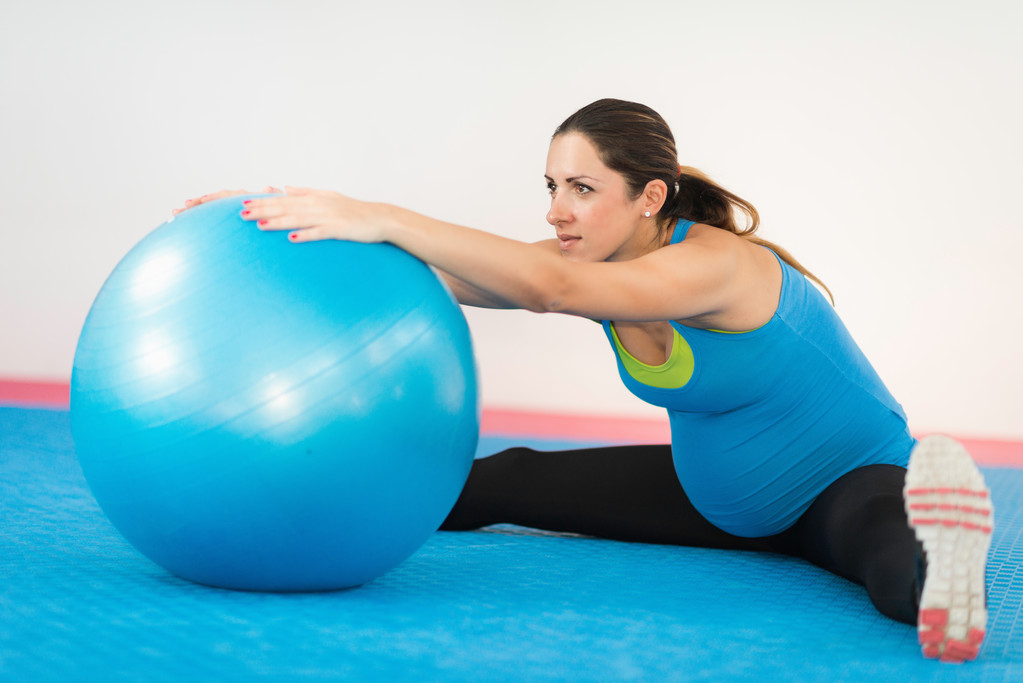Learn about the essential elements of maintaining good posture during pregnancy.
Understanding the Key Components of Good Posture During Pregnancy
Congratulations, you’re expecting! Pregnancy is an exciting and transformative time in a woman’s life. While you focus on taking care of your growing baby, it’s important not to neglect your own well-being, including maintaining good posture. Good posture during pregnancy is crucial for your health and the well-being of your little bundle of joy. In this article, we’ll explore the importance of good posture, the anatomy of good posture, common posture problems during pregnancy, tips for maintaining good posture, and the role of exercise in promoting good posture. So, let’s dive in and discover the key components of good posture during pregnancy!

The Importance of Good Posture in Pregnancy
Let’s start by understanding why good posture matters during pregnancy. Good posture not only enhances your physical appearance, making you look confident and radiant, but it also has numerous health benefits for both you and your baby.
During pregnancy, your body undergoes significant changes to accommodate the growing baby. These changes can put strain on your back, hips, and pelvis, leading to discomfort and pain. Maintaining good posture can help alleviate these issues and promote overall well-being.
Health Benefits for Mother and Baby
When you maintain good posture, you provide optimal space for your baby to grow and develop. It allows for proper blood circulation, ensuring that essential nutrients are efficiently delivered to your little one. Good posture also reduces the risk of developing complications such as back pain, muscle stiffness, and even premature labor.
Proper alignment of your spine and pelvis during pregnancy can also help prevent common conditions such as sciatica, which is characterized by pain radiating from the lower back down to the legs. By keeping your body in a neutral position, you can minimize the pressure on your nerves and reduce the likelihood of experiencing this discomfort.
Reducing Pregnancy Discomfort
Pregnancy can bring about a myriad of discomforts, from swollen feet to backaches. Proper posture can alleviate some of these discomforts by ensuring that your body is aligned correctly, taking unnecessary pressure off your joints and muscles.
When you maintain good posture, you help distribute your body weight evenly, reducing the strain on your lower back. This can be particularly beneficial during the later stages of pregnancy when the weight of the baby puts additional stress on your spine. By keeping your spine aligned, you can minimize the risk of developing chronic back pain that may persist even after pregnancy.
In addition to reducing back pain, good posture can also help alleviate other common discomforts such as leg cramps and swelling. By standing or sitting with proper alignment, you promote healthy blood circulation, preventing fluid buildup in your lower extremities. This can significantly reduce the swelling and discomfort often experienced in the feet and ankles during pregnancy.
Furthermore, maintaining good posture can improve your overall energy levels and mood. When your body is properly aligned, it allows for efficient oxygen intake, which can boost your energy levels and help combat fatigue. Additionally, good posture can enhance your body awareness and self-confidence, contributing to a positive mindset throughout your pregnancy journey.
Anatomy of Good Posture
Now that we understand the importance, let’s delve into the components of good posture during pregnancy.
Good posture during pregnancy is essential for maintaining overall health and well-being. It not only helps prevent discomfort and pain but also ensures proper alignment of the spine and pelvis, allowing for optimal fetal development and positioning.
Spinal Alignment and Balance
Your spine plays a crucial role in maintaining good posture. During pregnancy, the additional weight and changes in your center of gravity can cause your spine to curve excessively. This can lead to a variety of issues, including lower back pain, sciatica, and even difficulty breathing.
To maintain proper spinal alignment, imagine a string pulling you gently from the top of your head, lengthening your spine. This visualization technique helps counteract the effects of gravity and promotes a more upright posture. It also helps distribute the weight of your growing belly more evenly, reducing strain on your back muscles.
In addition to lengthening your spine, it’s important to engage your core muscles to support your posture. Strengthening your abdominal muscles can help stabilize your spine and prevent excessive curving. Incorporating exercises such as pelvic tilts and gentle abdominal contractions into your daily routine can be beneficial.
Proper Pelvic Positioning
Your pelvis acts as the foundation for your posture. It not only supports the weight of your growing baby but also affects the alignment of your spine and the position of your organs.
During pregnancy, hormonal changes can cause the ligaments around your pelvis to become more relaxed. This can lead to an anterior pelvic tilt, where your tailbone sticks out and your lower back curves excessively. To ensure proper pelvic positioning, it’s important to tuck your tailbone slightly under and engage your core muscles.
By tucking your tailbone, you align your pelvis in a neutral position, which helps prevent excessive lower back curvature. This alignment also promotes overall stability, making it easier to maintain good posture throughout the day.
Incorporating exercises that strengthen your glutes and pelvic floor muscles can further support proper pelvic alignment. Squats, pelvic bridges, and Kegel exercises are all beneficial for maintaining a strong and stable pelvis.
Remember, good posture is not only important during pregnancy but also in your everyday life. By practicing proper spinal alignment and pelvic positioning, you can prevent discomfort, support your body’s natural functions, and promote overall well-being.
Common Posture Problems During Pregnancy
During pregnancy, it is common to experience various changes in your body, including posture problems. Let’s take a closer look at some of the most common posture issues that you may encounter:
Anterior Pelvic Tilt
An anterior pelvic tilt is a common posture problem that occurs when the front of your pelvis drops and your lower back arches excessively. This shift in posture can lead to lower back pain and discomfort. To alleviate this issue, it is important to engage your core muscles and gently tuck your tailbone to maintain a neutral pelvis position. By doing so, you can help reduce the strain on your lower back and promote better alignment.
Additionally, practicing exercises that strengthen your core muscles, such as pelvic tilts and gentle stretches, can also be beneficial in correcting and preventing an anterior pelvic tilt during pregnancy.
Excessive Lower Back Curve
Pregnancy hormones can cause your ligaments to become looser, which may result in an increased lower back curve. This change in posture can lead to discomfort and strain on your back muscles. To address this issue, it is essential to focus on maintaining a neutral spine position.
Avoiding prolonged periods of standing or sitting can help alleviate the strain on your lower back. If you need to stand for an extended period, try shifting your weight from one leg to the other or using a footrest to reduce the pressure on your lower back. When sitting, ensure that you have proper lumbar support and take regular breaks to stretch and move around.
Incorporating exercises that strengthen your back muscles, such as gentle back extensions or cat-cow stretches, can also help improve your posture and alleviate discomfort caused by excessive lower back curve during pregnancy.
Remember, maintaining good posture during pregnancy is crucial for your overall well-being. By being aware of these common posture problems and taking proactive measures to address them, you can help minimize discomfort and promote a healthier and more comfortable pregnancy experience.
Tips for Maintaining Good Posture
Now that we’ve identified the common posture problems, let’s explore some tips to help you maintain good posture during pregnancy.
During pregnancy, maintaining good posture is crucial for your overall well-being and the health of your growing baby. Not only does good posture help alleviate common discomforts like back pain and fatigue, but it also promotes proper alignment of your spine and pelvis, which can contribute to a smoother labor and delivery.
Standing and Sitting Posture Guidelines
While standing, distribute your weight evenly on both feet, keep your knees slightly bent, and relax your shoulders. This will help you avoid putting excessive strain on any particular muscle group and maintain a stable and balanced stance. It’s also important to engage your core muscles by gently pulling your belly button towards your spine, as this provides additional support to your lower back.
When sitting, choose a chair with good lumbar support that helps maintain the natural curve of your lower back. Sit with your feet flat on the ground, hip-width apart, and avoid crossing your legs, as this can impair blood circulation. Keep your shoulders relaxed and avoid slouching forward or leaning back excessively. If necessary, use a cushion or rolled-up towel to support your lower back and maintain proper alignment.
Remember to take regular breaks and stretch to prevent stiffness. Sitting or standing in the same position for extended periods can lead to muscle fatigue and discomfort. Stand up, walk around, and perform gentle stretches to release tension in your muscles and improve blood circulation.
Safe Lifting Techniques
As your baby bump grows, it’s important to lift objects correctly to prevent strain on your back. Before attempting to lift anything, assess the weight and size of the object. If it feels too heavy or awkward to lift on your own, don’t hesitate to ask for help. Your safety and the well-being of your baby are paramount.
When lifting, always remember to bend your knees and squat down instead of bending from your waist. This helps engage your leg muscles and takes the pressure off your back. Keep the object close to your body as you lift, using your leg muscles to power the movement. Avoid twisting your torso while lifting, as this can strain your back muscles and potentially cause injury. Instead, pivot your feet to change direction.
Additionally, it’s important to listen to your body and avoid overexertion. If you experience any pain or discomfort while lifting, stop immediately and reassess your approach. It’s always better to be cautious and prioritize your well-being and the health of your baby.
Role of Exercise in Promoting Good Posture
Regular exercise during pregnancy can work wonders in maintaining good posture. Here are a few exercises to consider:

Prenatal Yoga and Pilates
These gentle forms of exercise focus on stretching and strengthening the muscles that support good posture. Prenatal yoga and Pilates classes specifically designed for pregnant women can help you maintain flexibility, improve balance, and promote proper alignment.
Strength Training for Postural Support
Strengthening exercises that target your core muscles, back, and hips can provide additional support for good posture. Consult with a qualified prenatal fitness instructor or physical therapist to ensure you’re performing exercises that are safe and suitable for your stage of pregnancy.
Remember, maintaining good posture during pregnancy is not just about looking fantastic in those maternity photos. It’s about taking care of yourself and your growing baby. So, stand tall, keep your chin up, and embrace the beauty of good posture throughout your remarkable journey to motherhood.



